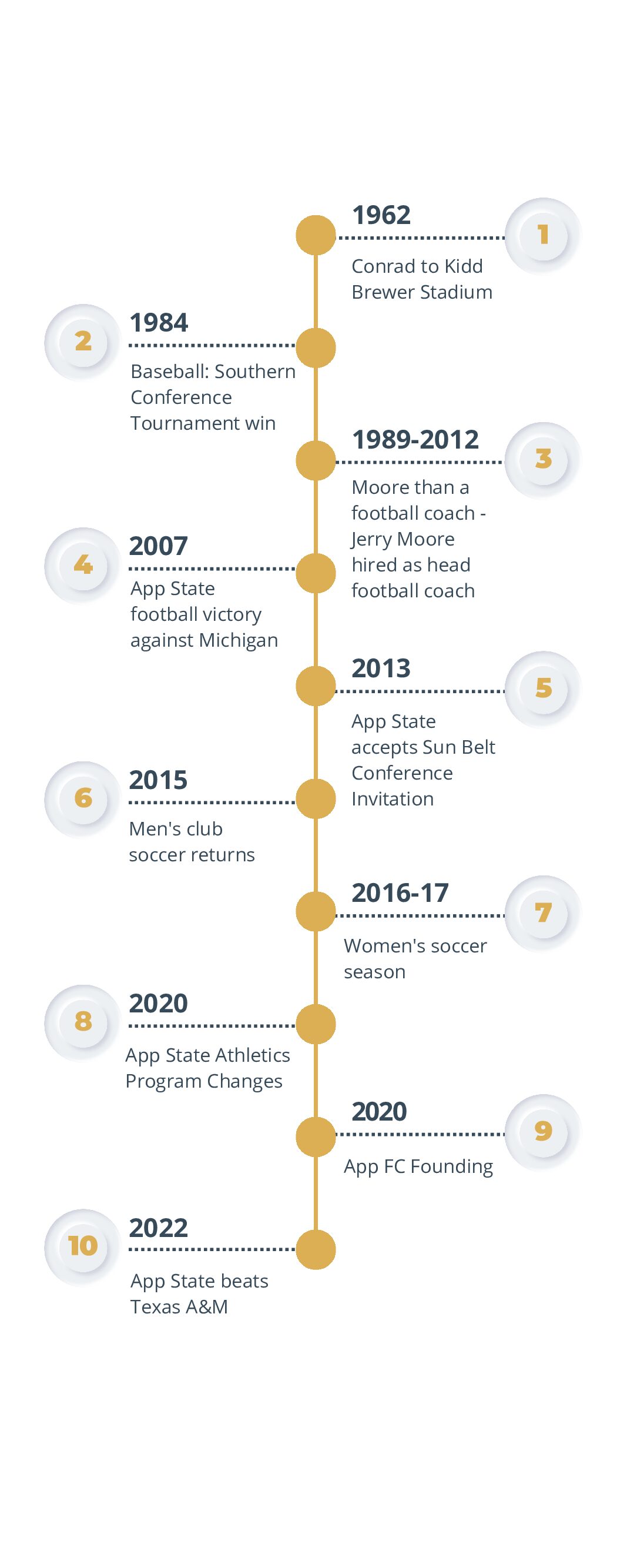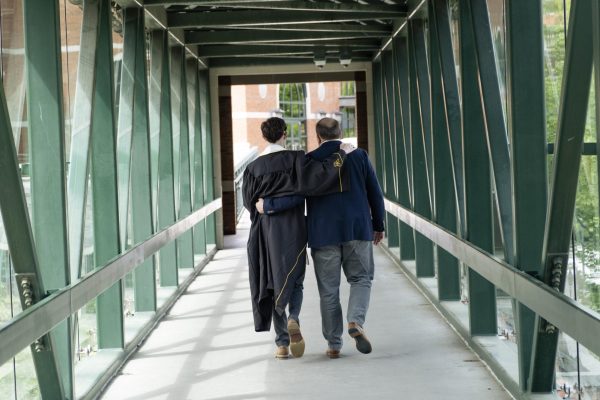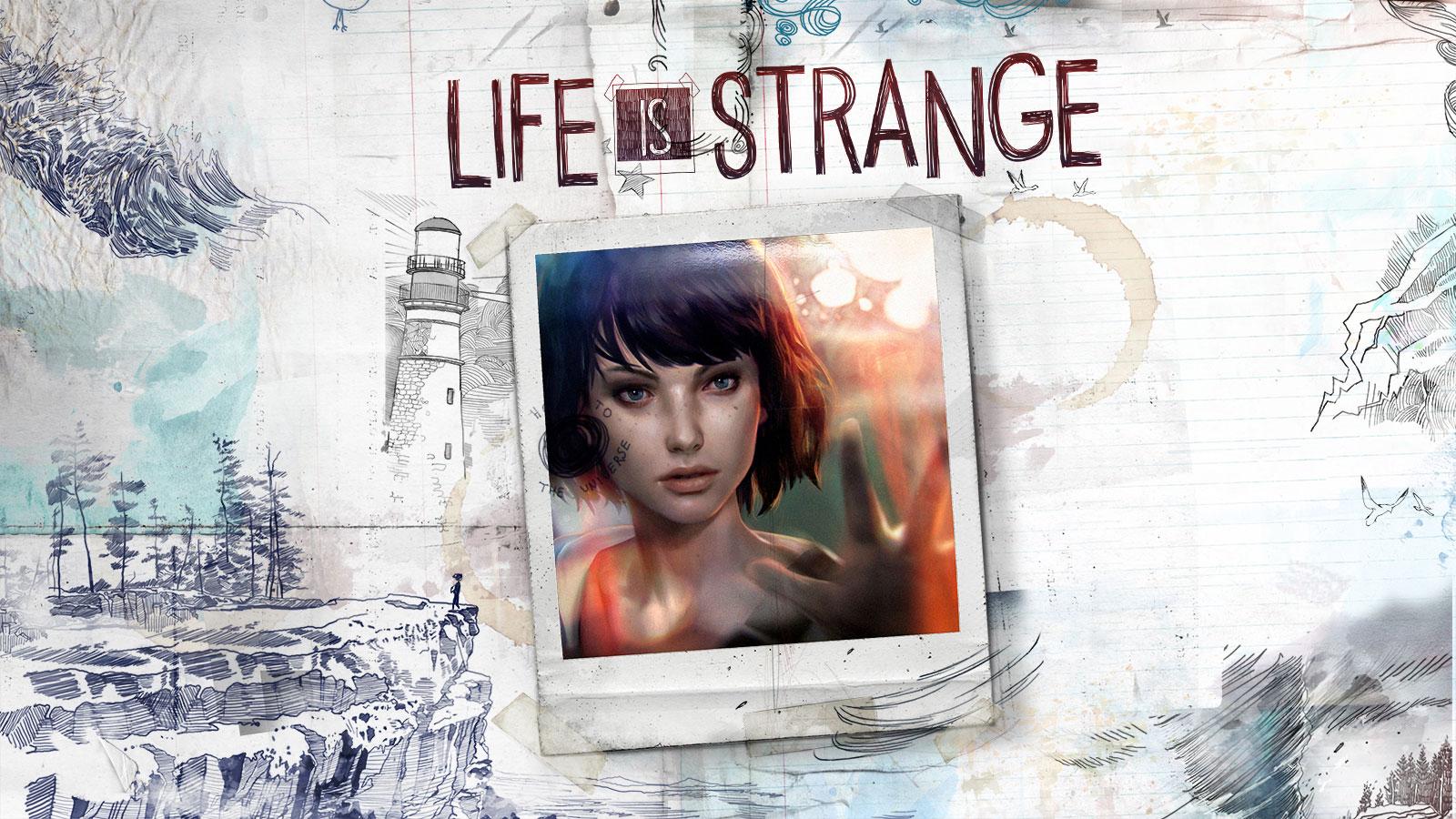Life is Strange” is a phenomenal game. I don’t think I can elegantly put it any other way. Developer Dontnod Entertainment has created something special with “Life is Strange” and it is one of the most beautiful and compelling stories I have ever experienced in a video game.
You play as Max Caulfield, an 18-year-old girl who is starting her senior year of high school at the arts and sciences school, Blackwell Academy, in her hometown of Arcadia Bay, Oregon. Blackwell is a school for the rich and famous and – as most high schools are – permeated with bullying, romance and drama with Max Caulfield caught up in the middle of it all.
Max, a quirky, shy and nosy girl with a passion for photography finds herself hiding in the corner of the girl’s bathroom after seeing Chloe, her childhood friend, shot and killed. In trying to save her, Max discovers she has somehow been given the ability to rewind time, thus saving Chloe’s life.
This where “Life is Strange” begins to spread its wings. Now given the option to go back in time, Max can fix her mistakes, help her classmates and ultimately change the future for better or for worst – or should I say, fix the player’s mistakes because in “Life is Strange” players are the one calling the shots and deciding what happens.
Dump a paint bucket on the most popular girl in school, make fun of her and then feel bad? No sweat. Did a conversation with the principal not go the way you hoped? Don’t worry. “Life Is Strange” allows players to rewind to the moment the choice is made and rewrite history.
This ability to go back and change any decision is how “Life is Strange” sets itself apart from the choice-based game market that is dominated by Telltale Games. One could argue that rewinding time and changing the outcome cheapens the experience and the decisions don’t feel like they carry as much weight. However, I never found this to be the case because it fit in with the setting of the game. If you could rewind time in high school and you missed your chance to get out of an awkward situation or get payback on a bully, wouldn’t you do it?
“Life is Strange” is filled with hundreds of little decisions for the player to make. From saving animals to helping students, there are tons of decisions to make, but not all decisions are minuscule and petty high school problems. Some of them force the player to decide if someone lives or dies or ones that will change the entire outcome of the game, and they are some of the hardest decisions I’ve had to make while playing a game.
This mechanic coupled with wonderful storytelling and character development is the reason why “Life is Strange” resonated with me so much. I became attached to Chloe like she was my childhood friend and I hated Nathan Prescott and his pompous, rich and evil family. “Life is Strange” did a wonderful job in making me feel like I was Max and this world I was in was mine.
The story of “Life is Strange” will take the player on one of the biggest emotional rollercoasters ever experienced. From laughing in a junkyard to watching a girl commit suicide, “Life is Strange” is not afraid to take your emotions and play with them. On the surface it may seem like a petty game where you play high school over again, but “Life is Strange” deals with dark and disturbing themes that I wasn’t expecting to find when I first started playing.
If it wasn’t for class, work and sleep, I wouldn’t have put the controller down. The story was just that good. The writing wasn’t always perfect, there were some cheesy bits of dialogue when walking across campus or in the dorms. On the flip side, voice actors, Hannah Telle and Ashly Burch knock it out of the park as Max and Chloe. They made their characters believable and brought them to life. Along with them, there were great performances from other cast members of “Life is Strange.” Without them, this game wouldn’t have been half of the amazing experience it was.
“Life is Strange” – as a whole – is a master class in storytelling and I think is better than a lot of the choice-based games on the market today.
Don’t get confused though, “Life is Strange” is also a game. It’s not just one long movie that requires players to make choices along the way. There is an actual game underneath the story. It follows the traditions of most adventure games. Players are placed on a map with multiple objectives. Each objective requires solving various puzzles before completing them.
Many of the objectives require players to unearth the secrets that lie within Blackwell and Arcadia Bay. These puzzles ranged from piece-of-cake to frustrating. But no puzzle gave me an “oh my god, this is impossible” feeling. A lot of these puzzles revolve around the rewind ability. While on paper that sounds like it can get old, it never felt too repetitive.
The great thing about the gameplay is that it didn’t feel like I was just playing filler content. There was a meaning behind this puzzle and I had to do it because it fit in with the storyline.
All of these features and mechanics come together to form a near-perfect game. I say near-perfect because there are quite a few technical hiccups that can sometimes get in the way of an amazing story.
“Life is Strange” has a unique low-resolution art style that creates a soft and cartoonish look. It can be charming when the player walks through campus and sees the soft greens in the grass and the adorable low-res squirrels running around, but a painting is best judged from afar and “Life is Strange” begins to lose its unique and friendly art style as the player gets closer to a person or object. It is not bad, but it is not great. It can be a nice break from the cell-shaded Telltale world that has been dominating the market, but there is room for improvement.
One of the biggest hiccups I faced was some lip-syncing issues. It wasn’t a constant problem, but very noticeable when things went wrong. I tried to look this over but in major plot points, sometimes characters would barely be moving their mouth and it would sully an otherwise emotional moment.
Under the hood, “Life is Strange” is sound. The game runs smoothly, load times are quick and I never had the game crash. That being said, there was one bug that caused my game to think that at a major point in the game, I killed a character when I really saved them. These problems are annoying, but I can’t stress enough that they in no way ruined my experience while playing “Life is Strange.”
High school is a tough place. Bullies, romances, old friends and new dramas defined just about everyone’s high school experience. It was a time where we all wished we could have been in Max Caulfield’s shoes and turn back time to ace a test or help a friend. Which is probably why this game resonated with me so much. Dontnod Entertainment nailed it with “Life is Strange.” My 14 hours spent wandering the halls of Blackwell and streets of Arcadia Bay were well spent.
Some technical hiccups and occasional ugliness doesn’t get in the way of one of the most touching and emotional stories I have experienced in a video game. “Life is Strange” quickly made its way to one of my favorite games of this generation and I can’t wait to see what Dontnod has in store for this series.
By: Malik Rahili, Editor-in-Chief












